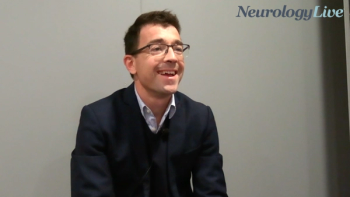
Beyond Seizures: Zorevunersen’s Impact on Cognition and Function
In this segment, epileptologist Scott Perry, MD, discusses zorevunersen’s effects on Vineland-3 scores and why improvements in communication, cognition, and adaptive behavior matter in Dravet syndrome. [WATCH TIME: 3 minutes]
Episodes in this series

Zorevunersen is an investigational antisense oligonucleotide therapy being studied for Dravet syndrome, a developmental and epileptic encephalopathy caused primarily by pathogenic variants in the SCN1A gene. By modulating RNA splicing to enhance production of functional sodium channel protein, zorevunersen is designed to target the underlying genetic mechanism of the disorder. Early clinical studies have suggested reductions in seizure frequency and signals of improvement across adaptive behavior measures, warranting further investigation in phase 3 evaluation.
In this NeurologyLive® Special Report mini-series,
In this third episode, Perry highlighted how zorevunersen produced measurable gains on the Vineland-3 adaptive behavior scale across multiple domains, especially expressive and receptive language. He delved into the significance of this scale, noting that modest score increases of 2–3 points were deemed clinically meaningful by both clinicians and caregivers. These data suggest that the therapy may influence neurodevelopmental outcomes, not just seizure control—a key shift in the treatment paradigm for Dravet syndrome.
Transcript edited for clarity.
Scott Perry, MD: The early phase 1/2a trials included several outcome measures beyond seizures, such as the Vineland-3, caregiver and clinician global impression of change, and quality-of-life assessments. The Vineland-3 is particularly important because it captures communication, socialization, coping, and motor skills—areas that families consistently cite as top priorities.
In both the Admiral and open-label studies, we saw significant improvements across multiple Vineland domains, most notably in expressive and receptive communication. These gains continued year over year—at 12, 24, and 36 months—indicating sustained benefit.
To help interpret what those changes mean, researchers surveyed clinicians and caregivers to determine what constitutes a “clinically meaningful” improvement. Both groups agreed that changes of 2–3 points represented meaningful progress, and zorevunersen achieved that across several domains. This suggests we’re seeing benefits that extend well beyond seizure reduction.
Newsletter
Keep your finger on the pulse of neurology—subscribe to NeurologyLive for expert interviews, new data, and breakthrough treatment updates.





































